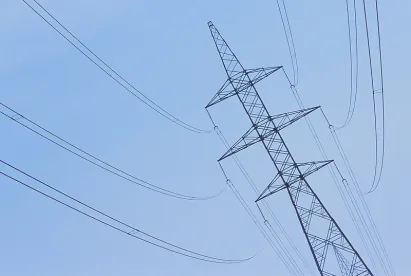On February 15, 2015, the Federal Aviation Administration issued its long-awaited Notice of Proposed Rulemaking for small unmanned aircraft systems (UAS), a broad class of technology commonly referred to as drones. While recent media attention has focused on the use of UAS by companies ranging from Amazon to pizza delivery businesses, the proposed rules also open the door for a host of other commercial users including utilities and energy companies.
Electric utilities around the country have traditionally used both ground personnel and manned aircraft for patrols and inspection of high voltage electric transmission lines, gas lines, and rights-of-way. Ground-based inspections are time consuming and frequently difficult to perform when utility infrastructure is located in rugged terrain away from roads. The use of manned helicopters and fixed wing aircraft for such purposes is costly and can be risky even for the most skilled pilots. While current statistics are difficult to locate, the Helicopter Association International reports that between 1979 and May, 2007 there were 25 accidents involving helicopters engaged in utility operations resulting in 43 fatalities. The FAA’s proposed rules would allow UAS to perform certain utility operations at less cost and with much less risk to personnel. In addition, the unique capabilities of UAS to hover in place and get closer to infrastructure are particularly advantageous as compared to larger, manned aircraft.
The FAA’s proposed rules focus on small UAS, those having a total weight of less than 55 lbs. including all onboard equipment and sensors. Among the various proposed regulatory requirements, such systems must remain within the visual line of sight (VLOS) of the operator and may fly only during daylight hours. Small UAS would be permitted to operate at a maximum altitude of 500 feet above the ground and a maximum airspeed of 100 MPH. Operation of small UAS would require air traffic control authorization in certain classes of airspace and would not be permitted over any persons not directly involved in the UAS operation. Small UAS operators would be required to obtain a UAS certificate issued by the FAA and pass a knowledge test every 24 months, however, the UAS itself would not be required to obtain an FAA airworthiness certification.
The proposed rules also consider a micro UAS classification that would apply to systems weighing up to 4.4 lbs. Such UAS would be allowed to operate up to a maximum altitude of 400 feet above the ground at airspeeds up to 30 knots and would be allowed to fly over persons unrelated to the UAS operation. Requirements for micro UAS operators would also be less stringent than for small UAS operators. The FAA has invited public comment on whether the micro UAS classification should be adopted and included in the final UAS rules.
Utilities recognize the potential of UAS and have been positioning themselves to take advantage of the technology when the final FAA rules are promulgated. For example, in 2014 the FAA granted a Special Airworthiness Certificate to San Diego Gas & Electric allowing the utility to conduct UAS operations in a limited geographic area to gain experience with using the technology for utility purposes. In 2013, the Electric Power Research Institute (EPRI) launched an FAA-sanctioned research project to evaluate the use of UAS for storm damage assessment of electric utility infrastructure.
Other energy companies are also anticipating the broader use of UAS for a variety of purposes such as inspecting wind turbine blades for defects, detecting malfunctioning solar photovoltaic panels, scanning of oil and gas pipelines for leaks and structural weaknesses, and inspecting flare stacks at oil and gas operations.
While the proposed UAS rules create significant potential for the use of drones by utility and energy companies, certain aspects of the proposed rules are likely to be problematic. For example, the requirement that the UAS operator remain in visual line of sight of the aircraft at all times will limit the ability of utilities and energy companies to deploy UAS along transmission lines and pipelines spanning long distances. This challenge may ultimately be solved by allowance for use of “first person view” technologies that utilize onboard cameras and sensors rather than the operator’s line of vision for navigation and avoidance of hazards. It is likely that this challenge and numerous other issues will be addressed during the 60 day public comment period for the proposed UAS rules. For now at least, the sky’s the limit when it comes to the future use of UAS by utilities and energy companies.




 />i
/>i

